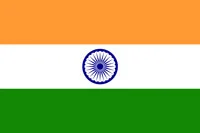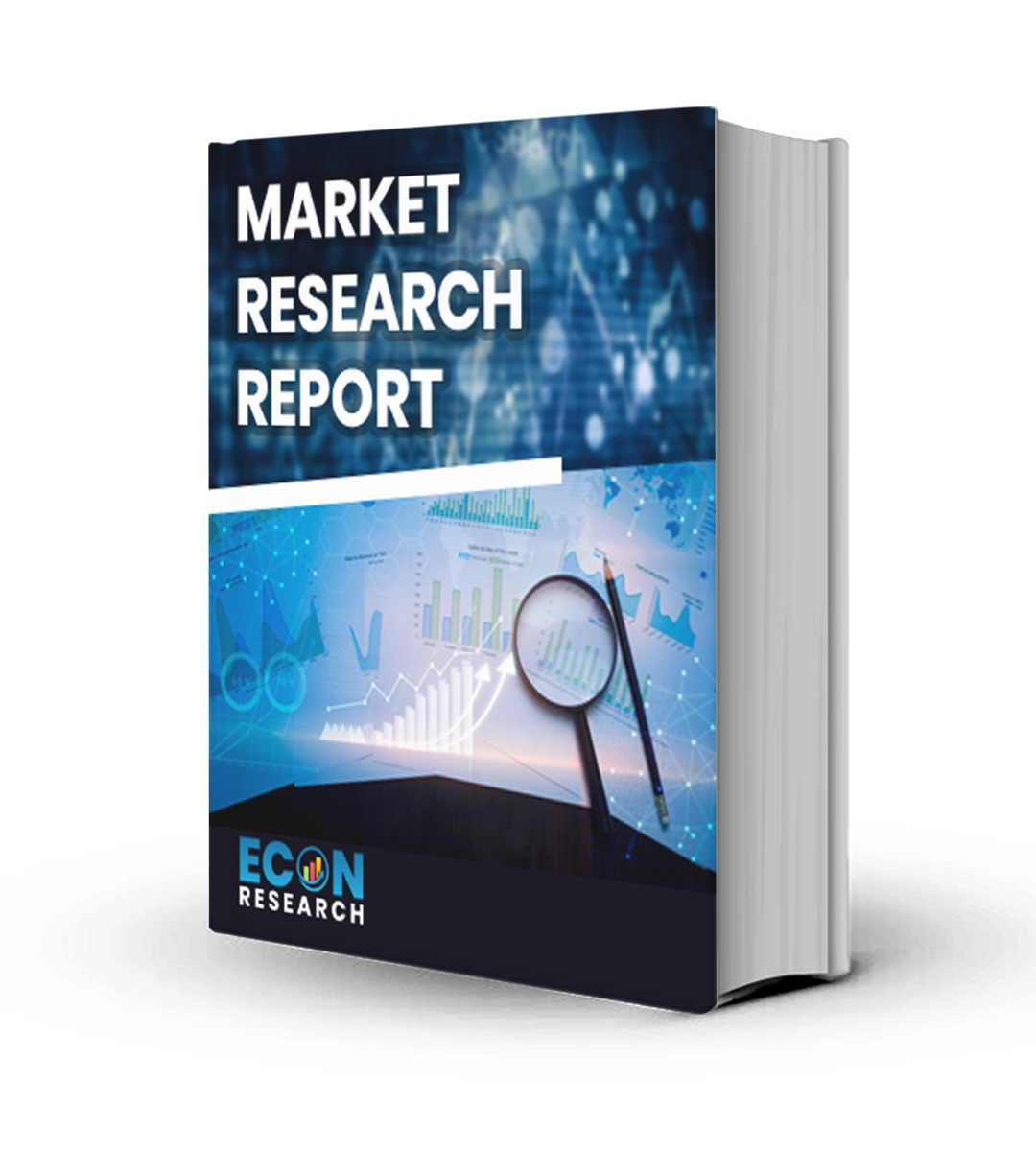Anemia Drugs Market Size, Share, Trends, Growth, and Industry Analysis, By Type (Oral, and Injection), By Application (Iron Deficiency Anemia, Chronic Kidney Disease related Anemia, Sickle Cell Anemia, and Aplastic Anemia), Regional Analysis and Forecast 2032.
STUDY PERIOD: 2019-2032
BASE YEAR: 2023
HISTORICAL DATA: 2019-2022
Global Anemia Drugs Market size was USD 13.69 billion in 2023 and the market is projected to touch USD 18.92 billion by 2032, at a CAGR of 4.13% during the forecast period.
Anemia is a condition where the body lacks adequate healthy red blood cells that would carry proper oxygen to the body's tissues and, therefore, causes fatigue and weakness. It can cause numerous conditions originating from various causes, including nutritional deficiencies, chronic diseases, and genetic disorders. The global market for anemia drugs primarily deals with different treatments meant to enhance the production of red blood cells and improve hemoglobin levels and correct underlying causes. Treatment is often focused on iron supplements, erythropoiesis-stimulating agents, vitamin and mineral supplements, and newer therapies specifically targeting selected anemia.
Factors such as an increasing prevalence of anemia, especially among pregnant women, children, and chronic patients, and other factors have posed a threat to the growth of this worldwide market for anemia drugs. Also, awareness due to organized campaigns and new treatment options available in the market enhance the proliferation of this market. Products in the market include oral and injectable drugs for the treatment requirements of different patients. Key players of this market are focusing on research and development for the launch of novel therapies and for enhancing the quality of existing products. Increasing healthcare spending and better access towards treatment in the developing world have also fuelled growth in this market. However, high prices of advanced therapies and side effects of some drugs could hinder market progress.
Anemia Drugs Report Scope and Segmentation.
|
Report Attribute |
Details |
|
Estimated Market Value (2023) |
USD 13.69 Billion |
|
Projected Market Value (2032) |
USD 18.92 Billion |
|
Base Year |
2023 |
|
Historical Year |
2018-2022 |
|
Forecast Years |
2024 – 2032 |
|
Scope of the Report |
Historical and Forecast Trends, Industry Drivers and Constraints, Historical and Forecast Market Analysis by Segment- Based on By Type, By Application, & Region. |
|
Segments Covered |
By Type, By Application, & By Region. |
|
Forecast Units |
Value (USD Million or Billion), and Volume (Units) |
|
Quantitative Units |
Revenue in USD million/billion and CAGR from 2024 to 2032. |
|
Regions Covered |
North America, Europe, Asia Pacific, Latin America, and Middle East & Africa. |
|
Countries Covered |
U.S., Canada, Mexico, U.K., Germany, France, Italy, Spain, China, India, Japan, South Korea, Brazil, Argentina, GCC Countries, and South Africa, among others. |
|
Report Coverage |
Market growth drivers, restraints, opportunities, Porter’s five forces analysis, PEST analysis, value chain analysis, regulatory landscape, market attractiveness analysis by segments and region, company market share analysis. |
|
Delivery Format |
Delivered as an attached PDF and Excel through email, according to the purchase option. |
Dynamic Insights
A primary driver of the increasing global demand for anemia therapies is the rising prevalence of anemia among large populations such as pregnant women, children, and others suffering from chronic diseases like cancer and kidney disorders. The continuously increasing incidence level has boosted the demand for effective treatment, thereby driving market growth. Increased awareness of anemia and its health implications, along with the betterment of healthcare facilities, is also responsible for growing demand for anemia therapies.
Still, it has some specific limitations within the market. High-priced medical treatments against complex anemia, especially erythropoiesis-stimulating agents (ESAs), limit such treatment for the patient in lower-income regions. Additionally, some of these drugs have side effects, and the patients tend to stop the treatment, which negatively contributes to the growth of the market. However, it has enormous opportunities for innovation and the development of new therapies for pharmaceutical firms. In addition, new investment in treatment modalities that are created with gene therapies and personalized medicine is ongoing; because of the healthcare infrastructure improving in emerging markets, this will unlock new patient bases and increase market potential.
Drivers Insights
- Rising Prevalence of Anaemia
The factors of the anemia drugs market growth include a high prevalence of the disease globally. Major factors which may increase rates of anemia include poor dietary habits, chronic diseases such as cancer and diabetes, and the increased demand for iron among pregnant women. The World Health Organization reported that an estimated 1.62 billion individuals worldwide suffered from anemia. This widespread condition has compelled the governments and health care bodies to focus upon anemia awareness and treatment, which has further fuelled the demand for anemia drugs. The growing incidence of anemia in developing countries due to malnutrition and poor access to healthcare also increases the demand for effective therapies, thus propelling market growth.
- Advancements in Treatment Options
Continuous research and development in the area of anemia therapy have seen the introduction of innovative therapies such as improving patient outcomes and broadening the treatment panorama. New formulations continue to come on board; intravenous iron therapies, for example, to improve efficacy with reduced side effects and new erythropoiesis-stimulating agents, which all spur the interest of healthcare providers and empower patients with more choices for managing their condition. As healthcare systems spend more money on better management of anemia, increasing portfolios of treatments encourage health professionals to prescribe medicines that boost the market.
Restraints Insights
- High Cost of Treatments
One of the primary restraints in the global anemia drugs market is the high cost associated with certain advanced therapies, particularly ESAs and intravenous iron formulations. These therapies can be prohibitively expensive, especially for patients in low- and middle-income countries where healthcare budgets are limited. As a result, many patients may not have access to these essential treatments, leading to suboptimal management of anemia and hindering market growth. Additionally, the financial burden on healthcare systems due to expensive treatments can lead to budget constraints, limiting the availability of newer therapies in some regions.
- Potential Side Effects and Risks
Anemia treatments, particularly ESAs, may carry risks and side effects that can deter patients from adhering to their prescribed regimens. Some patients may experience adverse reactions, such as hypertension, thromboembolic events, or allergic reactions, which can lead to treatment discontinuation. Moreover, the potential for mismanagement of anemia treatment, particularly in chronic disease patients, poses significant risks. These concerns can create hesitation among healthcare providers to prescribe certain anemia drugs, limiting market growth.
Opportunities Insights
- Research and Development of Novel Therapies
Ongoing research into novel treatment modalities such as gene therapy and personalized medicine creates significant opportunities for innovation within this anemia drugs market. Novel mechanisms of action and targeted therapies may possibly lead researchers to greater breakthroughs that can drastically alter treatment for anemia. A combination of therapies aimed at targeting the multifactorial nature of anemia is another possible path towards more effective management strategies. It is by investing in research and development that pharmaceutical companies can produce innovative therapies for better patient outcomes, now positioning themselves as leaders in this increasingly fast-changing landscape and spurring market growth.
Segment Analysis
- By Type
The global anemia drugs market can be mainly categorized into two types of oral and injectable formulations. Oral anemia medicines include iron supplements as well as vitamin formulations; these oral formulations are widely used because they are convenient and easy to administer. Oral treatment forms are more commonly used by patients with mild to moderately active anemia, allowing them to administer the treatment in a home setting. Injectable drugs are primarily used in cases of more severe anemia or in patients who cannot receive oral drugs. Injectable therapy-ESAs and intravenous iron preparations-are usually required to achieve a rapid increase in hemoglobin levels, which is highly critical in managing conditions such as chronic kidney disease-related anemia. There are several treatment options for patients available in this segment, which caters to different patient needs and preferences. Hence, the market will grow.
- By Application
The global anemia drugs market is divided into a number of key categories in the application segment, namely iron deficiency anemia, chronic kidney disease-related anemia, sickle cell anemia, and aplastic anemia. Iron deficiency anemia is the most common form and typically results from either inadequate dietary intake or absorption of iron; it brings on classic symptoms of fatigue and weakness. Anemia in chronic kidney disease comes as a result of the failure of the kidneys to produce sufficient erythropoietin, which is a hormone responsible for the production of red blood cells. Often, these have to be treated with ESAs and intravenous iron. Sickle cell anemia, on the other hand, is a genetic disease where mutated forms of hemoglobin are produced, making the red blood cells thickened and sickle-shaped. The treatment protocol for this will focus on programs such as pain management and blood transfusions. Aplastic anemia, which is a failure in the bone marrow leading to inadequate blood cell production, requires very special therapies.
- By Application
Major medical sectors that employ ablation technologies comprise the application segment of the Anemia Drugs market. Ablation procedures are used in the treatment of arrhythmias and other heart problems in patients with cardiovascular disease. Ablation is one of the treatments for cancer-the destruction of tumours or aberrant tissues in many organs. It is applied in ophthalmology to treat eye problems and also in pain management to relieve chronic pain. Ablation is used in gynecology and urology during treatment operations dealing with the reproductive and urinary systems, orthopedic treatment makes use of ablation technologies in disorders of the musculoskeletal system, and cosmetic/aesthetic surgery employs them for skin treatments and body reshaping.
Regional Analysis
North America is the market leader due to better developed healthcare infrastructure, high levels of awareness, and quite substantial investment in research. The United States also holds a majority share due to a higher rate of chronic diseases and iron deficiency anemia. Significant pharmaceutical companies and the proper distribution facilities further consolidate the market position in this region. Other government actions that improve health care access and outcomes among vulnerable populations spur the growth of the market.
Demand for anemia drugs is growing in Europe; the major contributors to this growth include Germany, France, and the UK. With an increasing number of aging and chronic diseases among others like renal diseases and cancer, anemia is increasingly being found to be prevalent in most European countries. Furthermore, guidelines introduced in most of these European countries have acted as a catalyst in encouraging better evidence-based treatments in the management of anemia.
The Asia-Pacific region is also reporting a positive growth in this aspect due to increased spending on health care, the increasingly improved recognition of anemia, and better access to treatment. Even India and China are reporting increased cases of anemia, especially in the female and pediatric populations, leading governments and health care providers to improve prevention and management programs. The region has high prevalence of anemia because of nutritional deficiencies and low access to healthcare, creating a challenge and an opportunity for the Middle East and Africa. In many ways though, in many areas, these regions remain ripe for the market as improvement efforts are underway to improve the healthcare infrastructure and increase general awareness about anemia.
Competitive Landscape
Key players as Amgen Inc., Johnson & Johnson, and Roche Holding AG have dominated the market through strong research and development ability and broad distribution networks. A number of anemia therapies including erythropoiesis-stimulating agents (ESAs) and intravenous iron formulations offered by the companies are important in the treatment of more severe cases of anemia. The innovation and the potential of them to adapt into a change in market have led them to the top, which keeps them ahead of the competition.
Emerging players are also making a huge profit by focusing on niche areas and novel drugs. These players usually spend heavily on research to build up a product portfolio that resolves unmet needs, such as targeted therapy for individual forms of anemia or better formulations to ensure enhanced safety profiles. Mutual collaboration between pharma companies, academic bodies, and healthcare providers increasingly became commonplace to leverage the knowledge base in driving forward the development of new treatments.
Even more factors such as regulatory approvals, price positioning, and market access initiatives are affecting the competitive environment. Companies are seeking their space in the market in complex regulatory systems seeking approval for their products. In addition, the increased use of value-based care is increasing competition on price positioning and reimbursement strategies for companies to prove their therapies as cost-effective.
List of Key Players:
- Fibrogen
- Eli Lilly
- Mast Therapeutics
- GlaxoSmithKline
- Akebia Therapeutics
- Bluebird Bio
- Celgene Corporation
- Bayer AG
- GlycoMimetics
- Global Blood Therapeutics
- Mast Therapeutics
Recent Developments:
- Aug 2023, Bristol Myers Squibb has announced that the U.S. Food and Drug Administration (FDA) has granted approval for Reblozyl (luspatercept-aamt) to treat anemia in adult patients with very low- to intermediate-risk myelodysplastic syndromes (MDS) who are naïve to erythropoiesis-stimulating agents (ESA-naïve) and may require regular red blood cell (RBC) transfusions. This expanded indication for first-line treatment is based on interim results from the pivotal Phase 3 COMMANDS trial, which showed that Reblozyl provided superior efficacy in achieving concurrent RBC transfusion independence (RBC-TI) and increasing hemoglobin (Hb) levels compared to epoetin alfa, an ESA, regardless of ring sideroblast status. These findings highlight Reblozyl’s potential to effectively address chronic anemia earlier in the treatment pathway for a wider range of patients.
- Oct 2022, Pfizer Inc. has announced the successful completion of its acquisition of Global Blood Therapeutics, Inc. (GBT), a biopharmaceutical firm focused on discovering, developing, and delivering transformative treatments for underserved patient communities, particularly those affected by sickle cell disease (SCD). This acquisition strengthens Pfizer's dedication to SCD and enhances its 30-year legacy in the rare hematology field.
- Feb 2023, Agios Pharmaceuticals, Inc. a leader in cellular metabolism and innovative therapies for genetically defined diseases, has announced that the U.S. Food and Drug Administration (FDA) has approved PYRUKYND® (mitapivat) for the treatment of hemolytic anemia in adults with pyruvate kinase (PK) deficiency, a rare and debilitating form of lifelong hemolytic anemia. PYRUKYND® is the first-in-class oral PK activator and represents the first approved disease-modifying therapy for this condition.
Anemia Drugs Report Segmentation:
|
ATTRIBUTE |
DETAILS |
|
By Type |
|
|
By Application |
|
|
By Geography |
|
|
Customization Scope |
|
|
Pricing |
|
Objectives of the Study
The objectives of the study are summarized in 5 stages. They are as mentioned below:
- Global Anemia Drugs size and forecast: To identify and estimate the market size for global Anemia Drugs market segmented By Type, By Application, and by region. Also, to understand the consumption/ demand created by consumers between 2024 and 2032.
- Market Landscape and Trends: To identify and infer the drivers, restraints, opportunities, and challenges for global Anemia Drugs
- Market Influencing Factors: To find out the factors which are affecting the market of global Anemia Drugs among consumers.
- Company Profiling: To provide a detailed insight into the major companies operating in the market. The profiling will include the financial health of the company's past 2-3 years with segmental and regional revenue breakup, product offering, recent developments, SWOT analysis, and key strategies.
Frequently Asked Questions
Request For Table of Content
Research Methodology
Multi-report Purchase Plan
A Customized Plan Will be Created Based on the number of reports you wish to purchase
InquireRelated Reports
Client Testimonials
“We value your excellent customer service, promptness in responding, flexibility in customizing reports, and pleasant manner in general. ”
June S. Lee - SBIC/SBP&T Co.,Ltd
“The study and the services provided by Econ Research have more than met my expectations. The study has good depth and breadth and was reasonably priced. Instant responses to my questions delighted me, and the project went off without a hitch. When I require information about a different industry to help my clients, Econ Research would be the first market research firm I would get in touch with.”
Dan Dybus - AlixPartners


